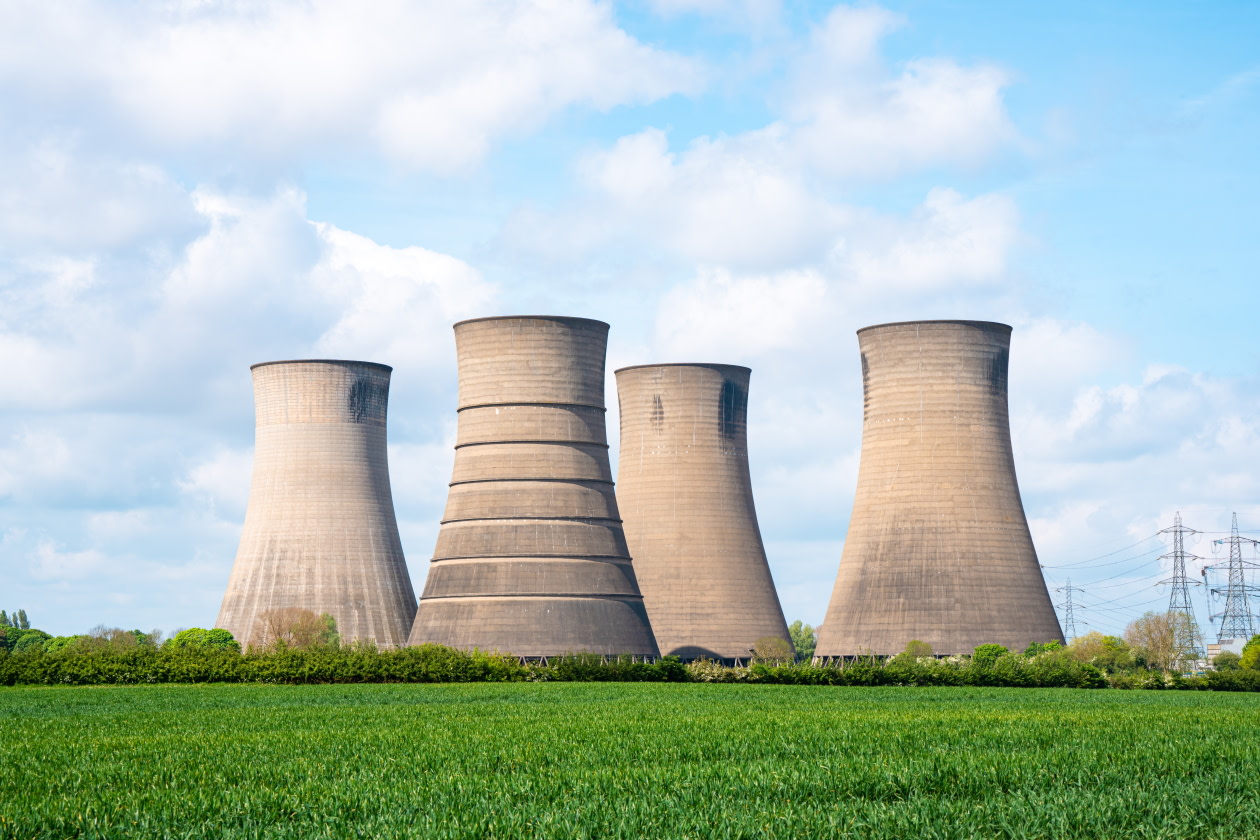The green energy boom between 2020/21 spurred huge investment into renewables and widespread government policy that aligned with international net zero ambitions.
Then, war in Ukraine and the energy crisis that followed inflated electricity prices in Europe as much as 230%, with global energy costs for households increasing by at least 63%.
This shifted political focus away from sustainability and towards affordability and, critically, security.
With energy demand forecast to grow in the coming decades, and a complicated and costly green transition on the horizon, who will be the winners and losers in the energy space?
This article isn’t personal advice. Investments and any income from them can rise and fall in value, so you could get back less than you invest. Figures should not be looked at on their own. If you’re not sure what’s right for you, ask for financial advice.
Investing in an individual company isn’t right for everyone because if that company fails, you could lose your whole investment. If you cannot afford this, investing in a single company might not be right for you. You should make sure you understand the companies you’re investing in and their specific risks. You should also make sure any shares you own are part of a diversified portfolio.
Wind and solar
Strong policy support from governments looking for secure and sustainable energy has caused wind and solar output to skyrocket over the past decade.
However, both industries have struggled more recently with the headwinds of high interest rates, with borrowing for new projects becoming pricier, and slowing growth, making it harder to stay competitive.
China is a big driver of global growth in solar – in 2023 alone, China installed more solar capacity than the whole world in 2022. And with its renewable electricity capacity growth set to triple in the next five years, this is expected to continue.
SSE
SSE is a UK utility specialising in power generation, electricity transmission, and distribution.
While primarily focused on renewables, SSE recognises the ongoing importance of gas – it incorporates gas-fired power stations to manage the intermittency of renewable sources.
The company is also exploring carbon capture and hydrogen as key decarbonisation strategies, pledging that new thermal plants will only be developed with robust decarbonisation plans.
Regulated utilities like SSE are typically characterised by somewhat predictable, stable revenues, some of which are inflation-protected.
Critically, a portion of revenue is also tied to investment levels, with larger investments in infrastructure – like renewable energy and smart grids – being encouraged by regulators as they benefit society.
This helps companies to recover costs and earn a return. This year, SSE plans to invest over £3bn with a large chunk of this directed towards its greener assets.
National Grid
To cope with the expected increase in electricity from the wind farms, the grid needs building out – that’s where National Grid comes in.
It owns and operates the electrical transmission system in England and Wales.
The group intends to position itself at the centre of the UK’s electricity revolution, investing £60bn over the next five years in building out its infrastructure.
Investing in new solutions like battery storage, grid modernisation, and smart technologies will be key to meeting the changing demand.
As a regulated utility, revenues tend to be fairly predictable, borrowing costs are low and profits are linked to investment, creating an ideal climate for renewable growth.
So, although investment is costly right now, we expect the group to benefit from the energy transition in the long run and scoop up available government subsidies along the way.
Nuclear
Nuclear energy is one of the most heavily debated parts of the low-carbon transition.
Costly and time-consuming construction and decommissioning, health concerns of radioactive waste, and nuclear disasters like Chernobyl have dented the popularity of nuclear energy over the past 50 years.
But nuclear power has a far better health and safety profile than you might think.
Comparatively, it’s caused far fewer deaths relative to the amount of energy produced than fossil fuel sources like coal, oil, and natural gas, and even less than some renewables, like biomass and wind.
So, as a reliable baseload source of power with the lowest carbon emission rates of all energy sources, we believe nuclear power will form an important part of the future energy mix.
Cameco
Cameco is one of the largest global providers of the uranium fuel needed to power nuclear reactors. It also offers nuclear fuel processing services, refinery services, and it manufactures fuel assemblies and reactor components.
Revenue jumped 39% last year, partly because of rising uranium prices and volumes. We don’t expect the same jump this year, but there are still longer-term price and volume tailwinds playing out.
Apart from the drive for clean energy, geopolitical tensions, especially in Russia, mean countries are looking for ways to reduce reliance on the region for energy production.
Cameco is primed to benefit.
It has several approved and built assets in less volatile regions ready to fire up.
Almost 90% of uranium consumption is in countries with little-to-no primary production and Cameco has controlling ownership of one of the world’s largest high-grade uranium reserves.
While we think the world is at an inflection point for uranium demand, that doesn’t mean prices will go up in a straight line. Uranium is a commodity which makes Cameco exposed to a cycle it has little control over – investors should be prepared for some volatility. Any high-profile safety incidents are also likely to be negative for sentiment.
This week is Good Money Week, a national campaign promoting responsible investing.
We’ll be marking Good Money Week with a series of articles to help you invest while managing environmental, social and governance (ESG) risks.
To make sure you don’t miss out, sign up to our Editor’s Choice email and we’ll send you our latest expert insights and ideas from the week and more.
Fossil fuels
As of 2023, fossil fuels account for around 75% of global energy consumption, compared to over 80% 50 years ago.
Oil and gas
Representing over 50% of global energy consumption, oil and gas has powered industrialisation, transportation, heating, and are essential for many chemical products and fertilisers.
While the exact trajectory for oil and gas is still heavily debated, most agree that demand will rise for gas and begin to slow for oil in the near future.
The International Energy Agency is forecasting a plateau in oil demand growth by 2030, largely driven by waning demand in China, accelerating clean technologies and energy efficiency improvements.
In September, oil prices hit a two-year low. For now, however, that’s more likely a function of the usual macro-economic influences than a step-change in the energy mix.
From an investment perspective, with valuations in the sector below the long-run average, we believe there’s a strong investment case for the sector, which is renowned for being a source of strong cash generation.
The transition to cleaner energy is underway, but it’s going to take time.
To stop the lights going out, it’s important that the oil and gas industry remains viable during the transition. The oil majors’ vast infrastructure and distribution networks leave them well placed to play an important role in bringing new energy solutions to the end user.
But investors should be under no illusion that clean energy will be any more than a small slice of the industry’s energy mix over the near term.
This increases the long-term risk for the planet and oil and gas stocks, facing high exposure to transition risks and the potential for assets to become ‘stranded’ if their transition plan isn’t credible.
We think some of this risk can be lowered by focusing on companies that are taking a genuine approach to the transition. And ones that leverage scale and technical know-how to successfully implement sustainable solutions.
Eni
Eni stands out from the pack in terms of its commitment to the energy transition, particularly when it comes to its emissions targets. However, we think investors will need more clarity on how the group will achieve these.
In terms of business mix, its renewable energy and sustainable transport solutions activities should deliver underlying cash profit approaching €2bn this year. That’s around 10% of the group total, and investment in low and zero-carbon solutions is expected to equal around 30% of Eni’s total budget between 2024 and 2027.
Eni’s balance sheet is less robust than some of its competitors, meaning it might be less well placed to ride out volatility in commodity prices. That’s reflected in a valuation towards the bottom of the peer group. However, if it can execute on its plans to dispose of some €8bn of non-core assets, that could see the deficit close.
It’s certainly not turning its back on its oil and gas operations yet, with upstream production targeted to expand from about 1.7mn to around 2mn barrels of oil equivalent per day by 2030. Production from fields currently due to come on stream is dominated by natural gas.
That should help to support the cash-flows required to sustain high levels of investment into the business and generous returns to shareholders.
That said, fluctuations in commodity prices are likely to remain a key driver of sentiment. Shareholders are currently compensated by a forward dividend yield of 7.6% – but remember, yields are variable and income is not guaranteed.
Coal
Developing economies in Asia and industrial processes continue to drive coal demand, which is the largest source of man-made carbon emissions. Some forecast a peak this decade. But this will depend on the rollout of technologies and the green ambitions of energy-hungry economies like China and India.
What about other renewable energy?
There are lots of other exciting alternative energy sources, but these tend to rely on specific geographical conditions and/or technological innovations.
For example, Iceland generates over 99% of its electricity from renewable sources. Its positioning on top of a volcanic hotspot provides easy access to geothermal energy, and its numerous rivers, fed by melting glaciers and abundant rainfall, offer significant hydropower potential.
Bioenergy, like biofuels, offer cleaner alternatives to traditional diesel and jet fuel, and the same for green hydrogen. But both still have a way to go to become cost-competitive on a large scale.
Historically, hydropower has been the largest source of renewable electricity, offering a stable and storable source of energy. However, slowing investment and ageing infrastructure pose a challenge that needs fresh policy to overcome.
As it’s Good Money Week, now is an ideal time to look at your investments through an ESG lens and try spot the opportunities and weigh up any potential risks.
For more information on how to invest with ESG in mind and other responsible investing approaches, visit our responsible investment hub.
This article is not advice or a recommendation to buy, sell or hold any investment. No view is given on the present or future value or price of any investment, and investors should form their own view on any proposed investment. This article has not been prepared in accordance with legal requirements designed to promote the independence of investment research and is considered a marketing communication. Non-independent research is not subject to FCA rules prohibiting dealing ahead of research, however HL has put controls in place (including dealing restrictions, physical and information barriers) to manage potential conflicts of interest presented by such dealing. Please see our full non-independent research disclosure for more information.


